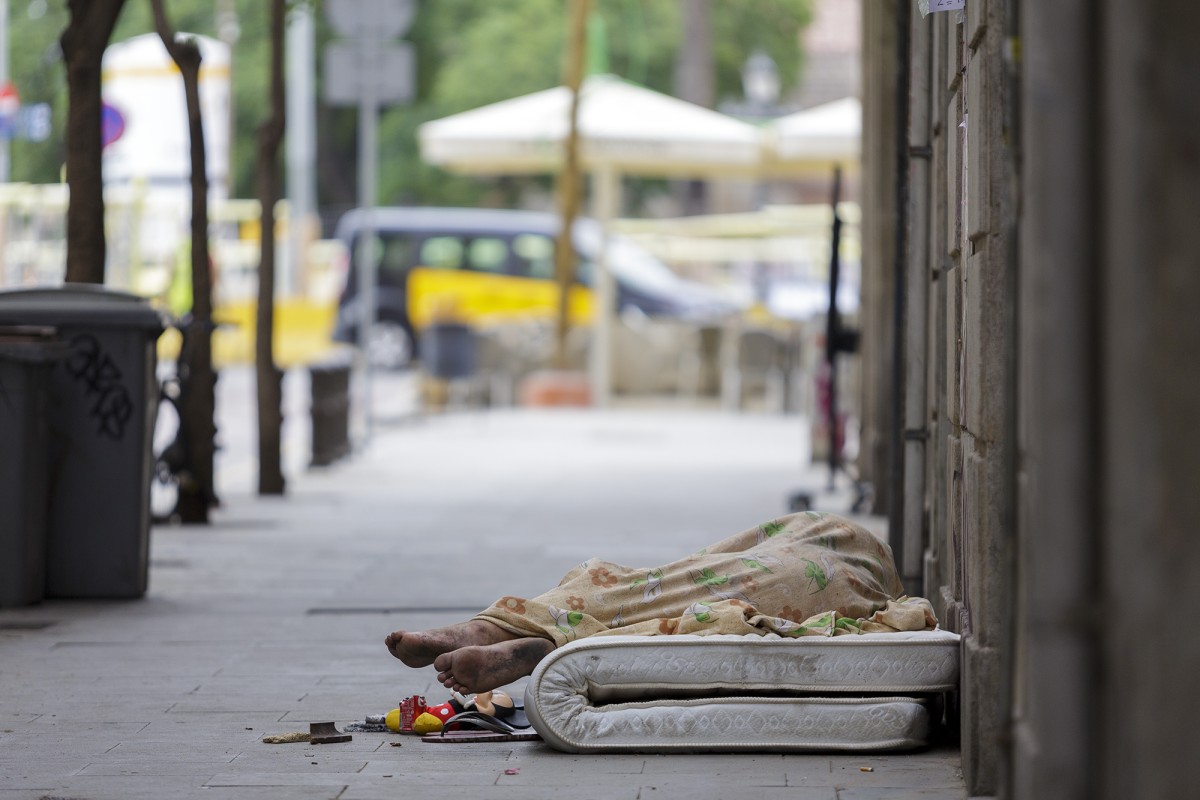
Barcelona has a problem on its streets. According to the latest estimate by Fundació Arrels, an organisation that provides care and guidance to Barcelona's homeless people, the Catalan capital has more than 1,380 homeless people. The report highlights that 87% of the homeless people are men, 9% are women, 1.3% are trans women and 1.2% are non-binary.
On 13 December 2023, we identified 1,384 people living on the streets in Barcelona, the highest figure since records began in the city. Twenty-four per cent of homeless people were in the Ciutat Vella district, 22% were sleeping rough in Eixample, and 15% and 14% were in the Sants-Montjuïc and Sant Martí districts, respectively.
According to the foundation, the increase of one percentage point in the number of trans and cis women stands out. The difference between men and women is that women tend to suffer from other less visible forms of homelessness, and when they reach the street, their situation is usually more serious.
Migrants continue to dominate among the homeless (74%), while in local census figures, they make up only 29%. "Being a migrant is a risk factor," according to the foundation.
The average age of people living on the street is 43, one year younger than the previous year. The youngest people surveyed were born abroad: 37% born in non-EU countries are under 35 and 13% are under 25. In comparison, people born in Spain or EU countries under 35 represent 16% and 18% respectively; and under-25s represent 3% and 5% respectively.
Older people are mostly born in Catalonia and the rest of Spain. On average, the people we interviewed have been living in Barcelona for a decade and mainly came to look for work. Eighty-eight per cent of non-EU immigrants and homeless people have only ever experienced homelessness in Barcelona.
Time being homeless is on the rise
On average, the people interviewed by Fundació Arrels have been living on the street for four years and five months (the previous report's average was four years and four months). This is a high average and has not yet recovered to the pre-pandemic level when it was three years and five months. Chronic homelessness is particularly severe among people born in Spain and the EU, with an average of five years and eight months and six and a half years, respectively.
Rental housing was the last place they slept under cover
The study also reveals where these homeless people were last housed and why they lost their last homes. In 28% of the cases, their last place was rented accommodation and in 8% of the cases it was owned accommodation. This means that they are people who have a relatively secure place to live and have moved on to sleeping on the streets.
For two out of ten people interviewed (18%), the last accommodation was an institutionalised service and then they had to sleep on the streets.
Losing their job, problems with their family or separating from their partner, housing-related problems and migratory processes are the main reasons given by people living on the streets to the Foundation for losing their accommodation. It is worth noting that 5% of people say that they have never lived in stable housing.
Young people, often the most under-served
The youngest people are also the most under-served: 56% of under-25s and 51% of under-35s say that they have not received any public or private social care in the last six months.
Fifteen per cent of homeless people in Barcelona say that they have lived in a child and youth protection centre. This percentage is 41% of people under 25 years of age living on the street. Having lived in a child or youth centre is a risk factor for homelessness.